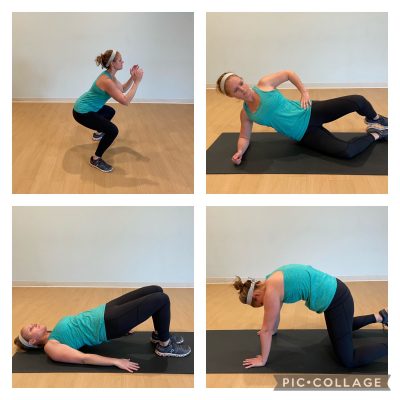Women's Health
4 Pelvic Floor Exercises Better Than Kegels
Kegels, Kegels, Kegels
The typical recommendation of pelvic floor exercises provided to women who complain of bladder issues such as leaking with activities or an overactive bladder is to “do kegels.” Just do kegels. Do them all day every day. However, for some women, kegels can do more harm than good, and there is a lot more to a kegel. As we referenced in a prior blog a “weak” pelvic floor can be due to a number of factors, including poor coordination or even proprioception (how do I find these muscles?). If you can’t find the muscles, then you might just be strengthening your gluts or abs and totally missing your pelvic floor. This is when an evaluation from a women’s health specialist is extremely important.
4 Pelvic Floor Exercises to Try Instead
But who wants to just do kegels? And really, how functional is that? Although it’s important to be able to target the pelvic floor, nobody wants to do 100 kegels a day. But there is good news! There are exercises that actually activate the pelvic floor muscles MORE than if you were just doing a kegel. In a recent article in the American Journal of Obstetrics & Gynecology, Crawford et al looked at various exercises and how much they activated the pelvic floor compared to a kegel. Below are the percentages greater than an isolated kegel in a few tested exercises:
- Squat: 30%
- Side lying bent knee lift: 25%
- Bridge: 56%
- Cat/cow: 41%
A Word of Caution
So then, why not just do these? Well, these exercises include larger muscle groups, and if you can’t coordinate the pelvic floor, then it’s not quite as helpful. Think about a large switch board full of dimmer switches. Each switch represents a muscle. With all movements, we have to turn on certain muscles, while also turning down others. So, if you are not activating the pelvic floor muscles appropriately, then the bigger muscles (ie: gluts, quads, etc) might overpower and make it difficult to activate the little muscles such as the pelvic floor and deep core muscles.
A pelvic floor specialist can assess your pelvic floor strength, along with the ability to control your core with various movements. An evaluation by a professional to assess your pelvic floor strength, endurance, control, and tone can alleviate pain, leakage, urge, and help you safely return to an exercise program.
Schedule an appointment with Danielle Vaughan, Women’s Health Specialist, today!
Reference: https://www.ajog.org/article/S0002-9378(16)00035-1/fulltext
Conclusion: Specialized movements, when performed in conjunction with voluntary pelvic floor contractions may provide greater motor unit recruitment than traditional kegel exercises

